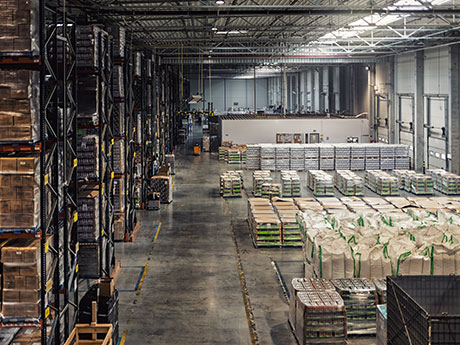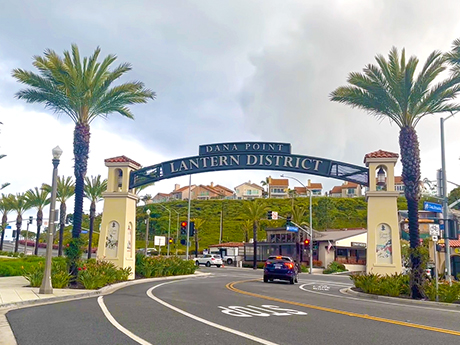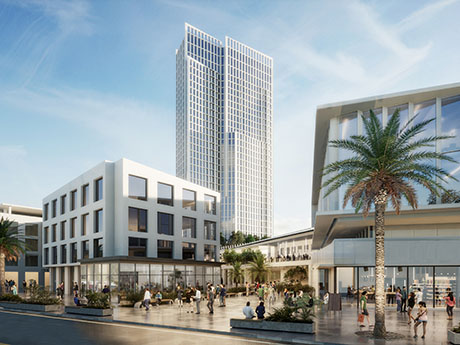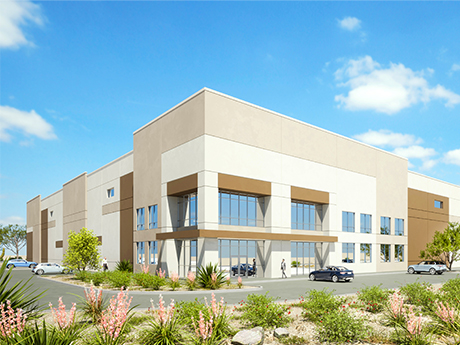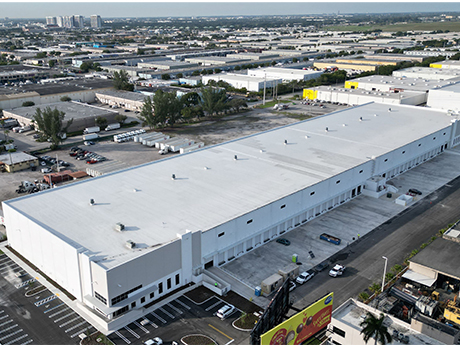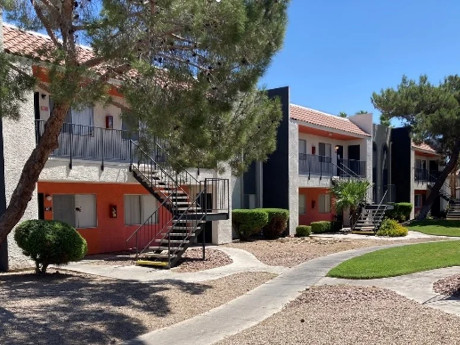By Chris Mergenthaler, DarwinPW Realty/CORFAC International The Windy City, as Chicago is often dubbed, has long been a vital hub of commerce and industry. Boasting 19 intermodal facilities operated by six Class I railroads, a top 15 worldwide cargo airport, and sitting at the confluence of seven interstate highways that allow goods to reach 25 to 30 percent of the U.S. population within one day’s drive, Chicago’s central location makes it a key logistics and transportation hub. The robust labor force of over 4.7 million nonfarm employees, according to a first-quarter 2024 U.S. Bureau of Labor Statistics report, coupled with Chicago’s location and infrastructure, lay the foundation for a fundamentally strong industrial market. While the long-term outlook of the Chicago industrial market remains positive, the Windy City is facing some headwinds as the market progresses through 2024. Uncertainty, whether positive or negative, has been a common theme of the Chicago industrial market since early 2023 as the market reacts to changing macroeconomic and geopolitical factors. Uncertainty in the global supply chain, trade relations with other countries, as well as one of the longest freight market recessions in recent history, have led to an increase in direct and sublet space on …
Market Reports
— By Kelly Reenders — The California coastal city of Dana Point sought to redevelop its underutilized Town Center, with the goal being to create a pedestrian-friendly live-work-play neighborhood that encouraged further reinvestment and development. Now called the Lantern District, the four-block downtown is anchored by Prado West, a three-building mixed-use complex with 109 apartments and nearly 30,000 square feet of ground-floor restaurants, shops and public outdoor space. Though the endeavor is now something the city and residents can be proud of, the project had its share of challenges. These included gaining community support for proposed changes, in addition to overcoming a leasing timeline that included a pandemic shutdown. Embracing the Local Community For Dana Point and Prado West’s developer, Raintree Partners, the solution was to embrace local entrepreneurs. Raintree recognized the value of encouraging other owners to reinvest in their properties early on as the downtown plan took shape. This caught the attention of Max Fisher, owner of the Shwack Beach Grill, which sits across the street from Prado West. Soon enough, Fisher and his partners agreed to open HomeSlice, an Italian- and pizza-focused restaurant, in Prado West across from their existing grill. As local owners, the partners felt the …
Badiee Development has logistics and industrial projects throughout the Western U.S., but its current focus is the region’s three S’s: San Diego, Sacramento, Calif., and Salt Lake City. “Badiee Development is prioritizing leasing at our existing projects in San Diego and Sacramento, and entitling future projects in San Diego, Sacramento and Salt Lake City,” says Ben Badiee, the firm’s founder and CEO. “Our company holds a ‘land bank’ with plans to develop more than 2 million square feet across four distinct projects in three markets.” San Diego Badiee’s headquarters is ripe with industrial ventures for the firm. These include the two-building, 242,969-square-foot Sanyo Logistics Center and the 38-acre Britannia Airway Logistics Center, both of which are being built near the Mexican border in Otay Mesa. Britannia Airway has also been entitled for an interim use of industrial outdoor storage (IOS), allowing the project to accommodate about 1,000 trucks and trailers. “Being in our ‘backyard,’ Otay Mesa has proven to be a highly successful market for the firm,” Badiee says. “It is at the forefront of the onshoring/nearshoring trend for the U.S. and Mexico, and land availabilities are scarce.” Sacramento Land scarcity has also been a driver for Badiee in Sacramento …
By Dougal Jeppe, Colliers Over the past few years, we have been inundated with less than positive industry news. While it’s true we are at a historic moment in commercial real estate, and users are facing complex, never-before-seen questions about how to use their space, there remain many positives as we head toward the second half of 2024. So, let’s take a look at the good news from the Chicago office market. For now, downtown Chicago remains a tenant’s market, a trend expected to persist throughout 2024. With over 47.2 million square feet of office space available, tenants have a plethora of high-quality options to choose from, making it an opportune time for businesses seeking favorable lease terms to secure space. And companies are doing just that. There has been a recent uptick in large space renewals by long-term office tenants including some consolidations reflecting the commitments many Fortune 500 companies, such as Mesirow and PNC Bank, have made to the City of Chicago. Notably, JPMorgan Chase announced plans to reinvest in Chicago by renovating its namesake tower and keeping its 7,200 employees in the city. Similarly, Google has committed to the Central Loop, and plans to move about 1,000 …
By Taylor Williams Industry professionals who hail from and work in San Antonio often describe the city’s economy and real estate scene as steady and healthy in a sort of unspectacular way. Rarely does any commercial sector in San Antonio achieve the high highs and low lows of gateway coastal markets. Further, the market’s quiet consistency has come to stand out as its neighbor up the road, Austin, has exploded as a tech hub in the past decade, bringing with it fervent building booms that still can’t put a dent in the skyrocketing cost of living. Yet this same quality that in years past caused major retailers and restaurants — and investors — to pass on San Antonio is now a primary force that attracts them to the Alamo City, at least according to some local industry experts. Some of these individuals elaborated on the trend at the inaugural InterFace San Antonio retail conference, which took place on April 4 at the Hilton Palacio Del Rio hotel. Bethany Babcock, principal and co-owner of full-service firm Foresite Commercial Real Estate, was the first industry expert who addressed the market’s evolution in the post-COVID era. “We noticed at the last couple trade …
— By Megan Husic — For a long time, Las Vegas could not seem to attract major sports venues due to fear of sports gambling. But perceptions changed and opportunity skyrocketed when the supreme court struck down the federal law that prohibited sports gambling outside of Nevada in 2018, allowing other states to open sports books. Perception about major sports in Las Vegas seemed to change almost overnight. Since 2017, Las Vegas has attracted successful NHL and WNBA franchises, lured the Raiders from Oakland, Calif., and hosted high-profile events like the NFL draft, Super Bowl, the NCAA men’s Final Four and a Formula 1 Grand Prix. Now, Major League Baseball is on deck as Vegas is currently making plans to develop a $1.5 billion stadium at a site that included the former Tropicana hotel, which is due to be demolished later this year in anticipation of the stadium. Identifying Property with Potential Many sites along the Las Vegas Strip have been developed since the early 1960s. In some instances, these sites have been redeveloped several times over. In the environmental world, redevelopment sites typically occur on brownfields, defined by the U.S. Environmental Protection Agency (EPA) as a property, expansion, redevelopment or …
John Ramous, Nevada region partner at Dermody Properties, discusses how the southern part of the state’s various regions have evolved into industrial hubs — and what the firm is doing to capitalize on this. WREB: What is it about Las Vegas and its fundamentals that have made it an ideal place for industrial? Ramous: There are several key fundamentals driving Las Vegas’ — or Southern Nevada’s — growth as a comprehensive industrial and regional logistics hub. It’s strategically located near Southern California and other major West Coast markets, maintains a business and tax-friendly environment, has a supportive infrastructure, a streamlined permitting process, a focus on sustainability and a large, talented workforce with competitive labor costs. All these factors make this region an ideal place for industrial and logistics, as well as a very attractive location to work, live and conduct business. WREB: Can you tell me more about your Apex project? Ramous: Apex Industrial Park is becoming a primary center for larger and scalable logistics facilities, advanced manufacturing, technology and other distribution uses. Located in North Las Vegas off Interstate 15, it is luring major companies to the region, benefiting the entire Southern Nevada market. Trucks are arriving full …
— By Greg Tassi, vice chair, and Jason Griffis, senior director, Cushman & Wakefield — Southern Nevada continues to distinguish itself through economic diversity. Sports and entertainment, along with a robust industrial real estate market, play a key role in keeping Las Vegas relevant. Formula 1 Racing, the MSG Sphere, MLB’s Athletics and recent discussions around a potential NBA expansion team add to the local excitement. Meanwhile, a compelling industrial real estate market continues to attract and retain globally recognized businesses. The industrial segment in the Las Vegas Valley remains a safe bet for national developers and institutional capital partners, many of which have a healthy appetite to either enter the market or expand their holdings. Land scarcity is the primary barrier to entry for new groups entering the market. Infill sites have become increasingly scarce with very few parcels of more than five acres suitable for industrial development. The bulk of the new inventory will continue to push to the periphery of the Valley, including Sloan and Jean to the south, El Dorado Valley to the southeast and Apex to the north — home to Prologis’ recent 879-acre purchase. Henderson’s recently annexed El Dorado Valley attracted attention with a …
By Ben Eisenberg of Transwestern In 2023 and continuing into 2024, Miami’s industrial sector experienced moderate growth due to reduced lease turnover and despite accelerating interest rates and economic uncertainty. However, the market’s strong industrial fundamentals and international connectivity via Miami International Airport and PortMiami continue to demonstrate its enduring strength and resilience. Miami’s industrial market is powered by freight, logistics and e-commerce demand, along with traditional distribution, service and light assembly. The region continues to experience steady population growth that drives sustainable consumption of goods and services and, ultimately, the need for warehouse space. Accounting for nearly 27 percent of Florida’s overall population, Miami was home to more than 6.2 million people at the end of 2023 and is projected to grow to 6.3 million this year. The region’s population has expanded by nearly 7.6 percent over the past 10 years. Increased migration to the Sun Belt has boosted wealth, disposable income and consumption, making Miami one of the nation’s wealthiest metro areas, with some of the highest average home values. In the first quarter of 2024, Miami’s unemployment rate reached a record low of 1.5 percent and has remained below 2 percent since the fourth-quarter 2022. The region’s …
— By Jason Dittenber, Senior Vice President, ABI Multifamily — Las Vegas has attracted residents and real estate investors from around the world with its legendary nightlife, favorable climate and affordable living. In the post-COVID era, the multifamily market in Las Vegas has undergone significant changes. The city has seen a resurgence in an economy heavily reliant on tourism, but challenges persist. They include the current lending environment, increasing operational and construction costs, increased vacancy rates and declining rental rates. These factors have influenced developers and investors in the multifamily sector, creating opportunities and obstacles. Developers like Matter, Southern Land Co. and Grand Canyon Development Partners are helping to change the city’s multifamily dynamic by contributing to its economic and social advancements. Their innovation spans job creation, community development and sustainability initiatives. Moreover, their mixed-use properties foster business expansion, enhancing the city’s commercial landscape and key employment drivers. The Las Vegas MSA witnessed the delivery of 3,318 units in 2023, surpassing the five-year average of 3,069 units. The large number of new multifamily completions has created a more tenant-friendly market. Rental rates have softened but remain relatively high compared to average incomes. Over the past five years, rental rates surged …


